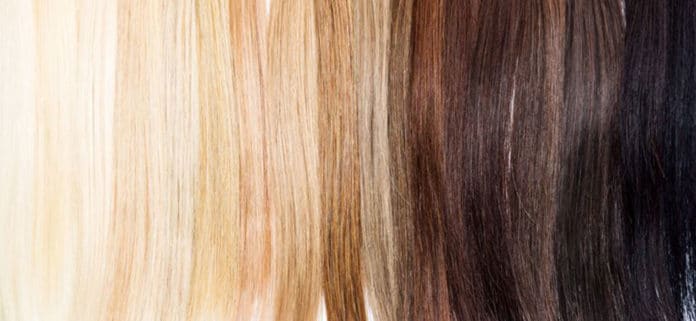Researchers at Northwestern University have developed a new way to create a spectrum of natural-looking hair colors, ranging from blond to black. Their method uses enzymes to catalyze synthetic melanin.
Melanin is a natural skin pigment. This pigment is responsible for your hair color.
Melanin is made up of pigment cells called melanocytes present in every hair follicle of your scalp.
Your hair color is white before it pops out of your scalp. And it is made up of Keratin, a protein behind strong and shiny strands. As your hair grows, melanocytes deliver melanin into the cells, which carry keratin and give your hair its natural dark color.
Northwestern‘s Nathan Gianneschi, the research lead and associate director for the International Institute for Nanotechnology, said, “In humans, it’s in the back of our eye to help with vision, it’s in our skin to help with protecting skin cells from UV damage. But birds also use it as a spectacular color display — peacock feathers are made of melanin entirely.”
Unlike coloring hair, where pigments are deposited into the hair shaft, bleach causes the hair shaft’s natural melanin to break down or dissolve. Once inside the hair shaft, bleach begins to dissolve the hair’s melanin. This strips melanin from hair.
In this study, scientists thought by replacing melanin instead of removing it and depositing color on the surface of hair instead of within it. Doing this could create a more sustainable way to create a lasting color.
This process includes dyeing hair by combining mushroom enzymes with an amino acid. Preliminary studies revealed the potential for the colored layer to persist through several washes.
Battistella said, “The dyeing process is similar from a stylist’s point of view, but these conditions are milder, so they take a little longer. Though it could be combined with a base, it’s unnecessary to use one, and there is no need for chemical pigments. Because we already have melanin in our bodies, we believe we won’t have allergic reactions to it.”
Along with being a milder process than traditional dye, coating hair in synthetic melanin holds the potential to protect hair from sun damage that can cause whitening. Studies showed that compared to untreated hair, hair treated with melanin pigment was damaged less when exposed to ultraviolet rays.
Benefits of this new process:
- Avoids the use of ammonia as a base layer.
- The precursors of treating hair with melanin are less toxic.
- The process uses safer, more scalable chemicals.
- There is vast potential in future cosmetic translations of synthetic melanin.
Journal Reference:
- Claudia Battistella, Naneki C. McCallum, Bram Vanthournout, Christopher J. Forman, Qing Zhe Ni, James J. La Clair, Michael D. Burkart, Matthew D. Shawkey, Nathan C. Gianneschi. Bioinspired Chemoenzymatic Route to Artificial Melanin for Hair Pigmentation. Chemistry of Materials, 2020; DOI: 10.1021/acs.chemmater.0c02790
